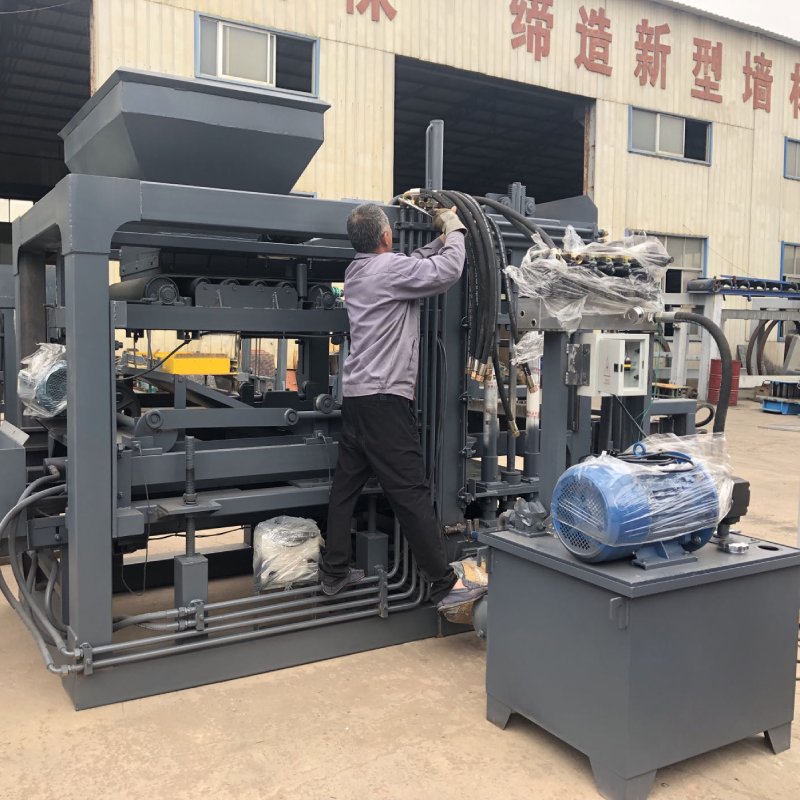
Image source Aiwei Block Machinery
The Ultimate Guide to Brick Block Making Machines
Introduction
Brick block making machines have become the backbone of modern construction, transforming the way buildings and structures are erected. These machines, equipped with cutting-edge technology, have streamlined the process of producing bricks and blocks, making it more efficient, cost-effective, and environmentally friendly. In this comprehensive guide, we will delve into the various aspects of brick block making machines, exploring their types, functionalities, benefits, and the factors to consider when choosing the right machine for a particular project.
Chapter 1: Understanding Brick Block Making Machines
1.1 Historical Evolution
To appreciate the significance of brick block making machines, it’s essential to trace their historical evolution. From manual brick-making methods to the automated machines we have today, the journey has been marked by continuous innovation. We’ll explore the key milestones in the development of these machines and how they have shaped the construction industry.
1.2 Types of Brick Block Making Machines
There are various types of brick block making machines, each designed for specific purposes. This section will provide an in-depth look at the different categories, including manual machines, semi-automatic machines, and fully automatic machines. We’ll examine the features, functionalities, and production capacities of each type to help readers understand which one aligns best with their construction needs.
Chapter 2: Components and Working Mechanism
2.1 Key Components
Brick block making machines consist of several crucial components that work together seamlessly. This chapter will break down these components, such as the mixer, conveyor belt, mould, and hydraulic system, explaining their roles in the overall functionality of the machine. Understanding these elements is vital for anyone considering the purchase or operation of a brick block making machine.
2.2 Working Mechanism
To operate a brick block making machine efficiently, one must grasp its working mechanism. We’ll take a step-by-step approach to explain how these machines function, from the input of raw materials to the final output of finished bricks or blocks. This section will provide a clear understanding of the entire process, enabling readers to appreciate the precision and efficiency involved.
Chapter 3: Advantages and Applications
3.1 Advantages of Using Brick Block Making Machines
The adoption of brick block making machines comes with a multitude of advantages. This chapter will delve into the benefits, including increased production speed, cost-effectiveness, reduced manual labor, and the ability to customize brick and block designs. By understanding these advantages, stakeholders in the construction industry can make informed decisions about incorporating these machines into their projects.
3.2 Applications Across Industries
Brick block making machines are not limited to a specific sector of the construction industry. Their versatility allows them to cater to various applications, from residential construction to large-scale infrastructure projects. We’ll explore how these machines are utilized in different industries, showcasing their adaptability and contribution to the advancement of modern construction practices.
Chapter 4: Choosing the Right Brick Block Making Machine
4.1 Project Requirements and Machine Selection
Selecting the right brick block making machine is crucial for the success of any construction project. This chapter will guide readers through the process of assessing project requirements, considering factors such as production volume, brick or block specifications, and available space. We’ll provide a comprehensive checklist to help readers make informed decisions when choosing the most suitable machine for their specific needs.
4.2 Key Features to Consider
Not all brick block making machines are created equal. In this section, we’ll outline the key features to consider when evaluating different machines. From production capacity and energy efficiency to maintenance requirements and customization options, understanding these features will empower individuals and organizations to make well-informed choices.
Chapter 5: Maintenance and Troubleshooting
5.1 Routine Maintenance Practices
To ensure the longevity and optimal performance of a brick block making machine, proper maintenance is essential. This chapter will outline routine maintenance practices, including cleaning procedures, lubrication schedules, and inspection routines. Implementing these practices will not only extend the lifespan of the machine but also contribute to consistent and high-quality output.
5.2 Troubleshooting Common Issues
Despite regular maintenance, brick block making machines may encounter issues during operation. This section will provide a troubleshooting guide, addressing common problems such as blockage in the conveyor system, hydraulic system malfunctions, and issues with the mixing process. By understanding how to identify and resolve these issues, machine operators can minimize downtime and maximize efficiency.
Conclusion
In conclusion, the world of brick block making machines is vast and multifaceted. From their historical evolution to their application in diverse construction projects, these machines play a pivotal role in shaping the modern landscape. Armed with the knowledge presented in this ultimate guide, stakeholders in the construction industry can navigate the complexities of choosing, operating, and maintaining brick block making machines with confidence, ushering in a new era of efficient and sustainable construction practices.
